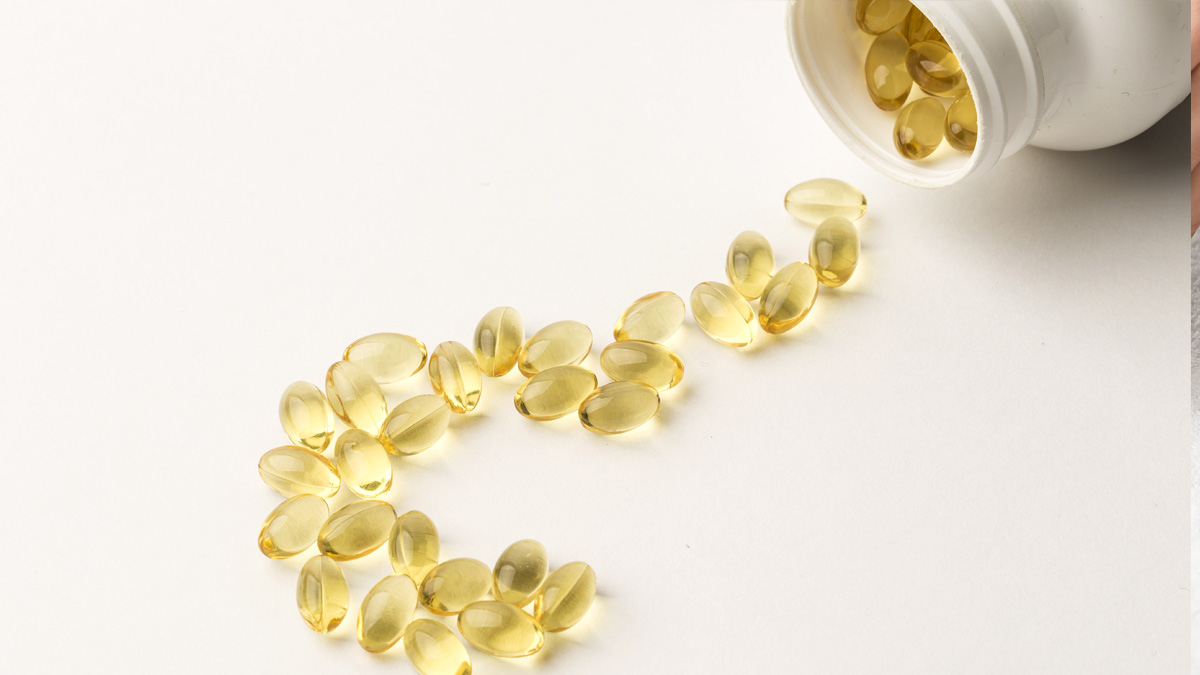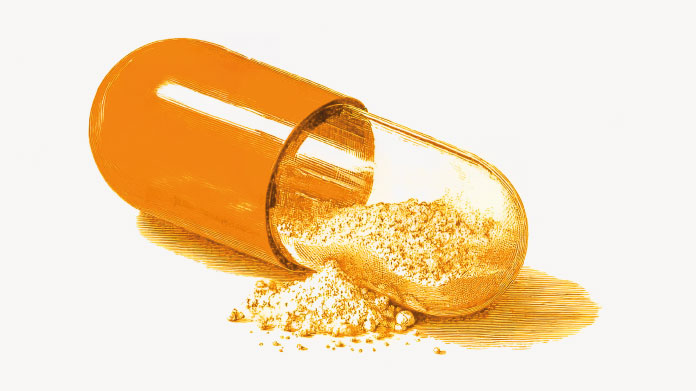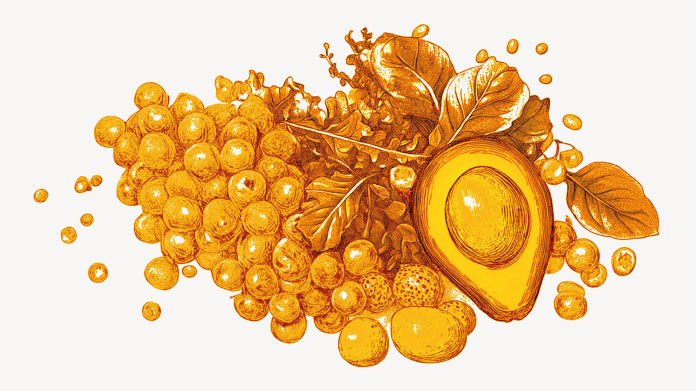What’s the difference between vitamin D2 and vitamin D3?
Are you wondering what the difference is between vitamins D2 and D3? And which of them is better? SuperSmart has the answers.

There are two forms of vitamin D in the body – D2 and D3: their empirical chemical formulae differ by a single carbon atom. We get them from different sources: D2 is found primarily in plant-based foods, while D3 is obtained from animal-origin foods, and is also produced when our skin is exposed to the sun’s rays.
What are vitamin D3’s characteristics?
Vitamin D3, or cholecalciferol, is synthesised from a sterol (complex lipid) called 7-dehydrocholesterol, naturally present in the body. When this sterol is exposed to the sun’s UVB rays, it is converted into vitamin D. Most of the vitamin D circulating in the body is produced in this way (1). That’s why we’re advised to expose our skin as much as possible to natural light. Vitamin D3 is also obtained from the diet, in particular from oily fish and egg yolk.
What are vitamin D2’s characteristics?
Vitamin D2 is a derivative of ergosterol, a sterol naturally present in the cell membranes of certain plants and fungi. Vitamin D2 is obtained by exposing ergosterol to the sun’s UVB rays. It is found in mushrooms (especially those exposed to UVB rays) as well as in vitamin D-fortified foods like margarine.
Which form of vitamin D should I choose?
Vitamins D2 and D3 are both metabolized in the liver and then converted in the kidneys into the active and usable form of vitamin D (2). However, research has shown that vitamin D3 increases the level of the active and usable form of vitamin D in the body to a greater degree (3). It is also less sensitive to heat and humidity than D2 and thus more stable (4).
As a consequence, if you wish to take a vitamin D supplement, vitamin D3 is the better choice. You have three options to choose from:
- Vitamin D3 5000 IU, with its high 5000 IU dose, is aimed more at those with a known deficiency or higher risk.
- Vitamin D3 Spray, a more convenient form, is recommended for those with a sensitive stomach.
- Vitamin D3 1000 IU, with its 1000 IU dose, is suitable for everyone.
References
- Thomas Ernandez, Catherine Stoermann-Chopard : Vitamine D et insuffisance rénale chronique : regain d’intérêt pour une vitamine oubliée. Rev Med Suisse. 2012, Vol. 8, pp 2140-2145.
- Laura Tripkovic, Helen Lambert, Kathryn Hart, Colin P Smith, Giselda Bucca, Simon Penson, Gemma Chope, Elina Hyppönen, Jacqueline Berry, Reinhold Vieth, and Susan Lanham-New : Comparison of vitamin D2 and vitamin D3 supplementation in raising serum 25-hydroxyvitamin D status: a systematic review and meta-analysis. Am J Clin Nutr. 2012, Vol. 95(6), pp 1357–1364.
Keywords
2 Hours
SuperSmart's Eye Pressure supplements: highly recommended!
I purchase SuperSmart's Eye Pressure supplements regularly for over 5 years, and gotta say they are truly a wonderful product for my Glaucoma. Highly recommended if you have eye pain from your Glaucoma.
D. Martinez
4 Days
Quick service
Quick service
MONELL
5 Days
Speedy service.
Speedy service.
ROSENTHAL Marvin
8 Days
Clear website- Efficient
Clear website. Excellent search engine and fast delivery!
Mohamad Hussein
11 Days
They have great products.
They have great products.
Vickie
11 Days
Great Shipping Time!
You Have A Great Shipping Time! Praise The Lord!
DMHoge
13 Days
Doctor Recommended!
Good pricing, very good availability, doctor recommended (couldn't find what I needed anywhere else), and it took only a week to arrive (which I can't complain about).
Al
14 Days
Great product and fast shipping
Great product and fast shipping
Marie
15 Days
New customer 1
I got my order fast and on time.
SA
15 Days
Great Service
Fast, good communication, as promised.
Juli
19 Days
Thrgood product website is easy to use and shipping…
Thr website is easy to use and shipping is very fast.
Richard Kienzle
20 Days
I like and recommend it!
I like and recommend it!
CRUZ Francisco
21 Days
Really like that they don’t have…
Really like that they don’t have fillers in their supplements. Great customer service and quality products
Becky E. Stiles
27 Days
Catalase.
Great catalase product.
John Yagi
38 Days
I always receive my products on time.
I always receive my products on time.
Kelly



